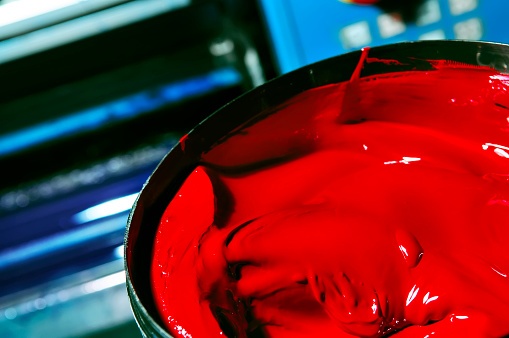What are the Benefits of Working With a Toll Paint Producer?
Most consumers assume the company whose name appears on a label manufactures the paint. They’re a paint company after all—why wouldn’t they make their own paint? In reality, many companies rely on toll paint producers, third party companies with optimal expertise, equipment, capacity, and other requirements that make them best suited for paint production. Here’s an outline of some factors to consider when deciding on a toll paint producer.
Paint Manufacturing Expertise
Not all companies that sell paint are necessarily expert manufacturers, nor do they need to be. Paying someone else to make your paint often reduces costs in the long run, especially if producing the paint would require new training, equipment, permits, raw materials, or other expenditures.
- Paint Chemistry Expertise: Maybe your company has had extensive success formulating and manufacturing paint in the past, but wants to introduce a new coating that utilizes unfamiliar workhorse resin chemistry. For example, an exterior epoxy coating manufacturer might want to add a urethane to its offering to help with UV stability and gloss retention. Rather than going through the trials and tribulations of formulating a urethane from scratch, the company might be better off relying on a toll paint producer with extensive experience in formulating and manufacturing urethanes. This will allow for a quicker turnaround time on formulation alterations while you bring your paint to market. Although paint and coatings manufacturing should not be confused with rocket science, there is an art to the process that you can tap into with a toll paint producer who’s more familiar than you with a particular chemistry.
- Manufacturing Efficiency: Efficient paint manufacturing is not every organization’s strength—especially when it comes to new products and chemistries. Rather than going through the growing pains of learning all the subtleties that lead to optimal paint production, it can make sense to work with a manufacturer who works with a particular paint chemistry on a regular basis. Utilizing this competitive advantage can have a significant impact on a company’s bottom line by minimizing rework and ensuring on-time paint production. Conversely, blown paint batches and unreliable operating procedures can quickly turn paint manufacturing into a source of frustration and missed opportunities.
- Raw Material Costs: Working with a toll paint producer who’s already utilizing a chemistry or resin system allows you to take advantage of scaled raw material costs of the resin, which is usually the most expensive raw material in a paint formulation.
Capital Expenditures
Some startup costs and other capital expenditures are to be expected when entering a new paint market. Another thing to keep in mind are capacity constraints, both in terms of labor and equipment.
- Piping: Some paint manufacturers utilize a shared piping system to pump bulk items into mixing tanks. If a resin or other bulk material is incompatible with the other systems, it will require an investment in its own piping system. Utilizing a toll manufacturer allows you to avoid these and other capital expenditures.
- Explosion Proof Equipment: Working with a toll paint producer often appears more advantageous after pricing out the explosion-proof equipment necessary to safely manufacture solvent-based paints, particularly low flashing solvents. Explosion proof paint manufacturing and filling equipment can cost multiple times more than equivalent non-explosion proof equipment.
- Capacity: Capacity constraints are arguably the most common reason for working with a toll paint producer. Paint manufacturing facilities aren’t always laid out with room to grow the operation. If a company needs to put in new mixing tanks, dispersers, filling lines, or raw material storage areas, they might not have the space to do so, and must choose whether to build out the facility or have someone else make their paint for them. Similarly, if your workforce is already stretched thin, management must choose whether to go through the costly onboarding process of hiring new employees or partner with a toll paint producer. In both scenarios, the quicker, more cost-effective solution is often working with a toll paint manufacturer.

Additional Workforce Training
Handling new materials, especially the ones used in paint, often requires a certified trained workforce. Paint manufacturers need to invest in training their employees to safely and effectively produce their product, especially with low flashing solvent formulations, including:
- Bonding, Grounding, and Static Electricity Training: Solvent-based paints often utilize flammables and combustibles in their formulations. All paint shop employees involved in manufacturing these products must have a heightened understanding of bonding and grounding equipment, which accounts for any static electricity that may otherwise ignite a batch.
- Confined Space Training: Due to the nature of paint manufacturing, employees may find themselves inside tanks while cleaning. Vapors from solvent based paint manufacturing can be extremely hazardous, and employees must be prepared in case an emergency situation arises while cleaning a tank after manufacturing or cleaning bulk solvent storage tanks during raw material changes.
- DOT Hazmat Training: Employees involved with preparing hazardous materials for shipments must understand and follow DOT-mandated paperwork, labeling, and shipping procedures. Employees involved in other aspects of solvent-based paint manufacturing should receive hazmat awareness training.
- PPE/Respiratory Protection: All plant employees for producing solvent-borne paints or other formulations exposed to hazardous materials must wear respirators and other appropriate personal protective equipment. Many states require a specialized medical evaluation prior to an employee receiving respiratory protection.
Environmental and Insurance Concerns:
- Hazardous Material Disposal Fees: The myriad of additional costs associated with producing solvent-based paint doesn’t end when manufacturing is complete. Disposing of xylene, heptane, toluene, and other hazardous materials runs paint producers around $60 per drum with additional costs for every inch of solids found in the drum. Typically, manufacturers are able to reuse some solvent as wash solvent for cleaning tanks after batches, but eventually the used solvent must be disposed of by utilizing an expensive certified carrier.
- EPA Permits and Reporting: Paint manufacturing often requires compliance with Title V of the Clean Air Act, which requires manufacturers to obtain operating permits. These legally enforceable documents are designed to improve compliance with environmental regulations and are typically issued by state or local agencies. For example, bringing in a new piece of paint manufacturing equipment involved in processing hazardous materials may require a new operating permit. Obtaining these permits can be a lengthy, costly process. Paint manufacturers must also comply with reporting requirements and other obligations under other EPA regulations including TSCA and CERCLA.
- Insurance: Manufacturing and filling solvent-based paint requires a higher degree of insurance coverage than waterborne paint manufacturing. Insurance companies are particularly concerned with flammables and filling flammables into certain types of containers. A proper engineering study, policy recommendation, and execution of that policy could take over a year to complete.
The items discussed above are only a handful of the factors that need to be weighed when deciding whether to make your paint internally or work with a toll paint producer. Interested in discussing your options with an expert? Contact Aexcel Corporation.


